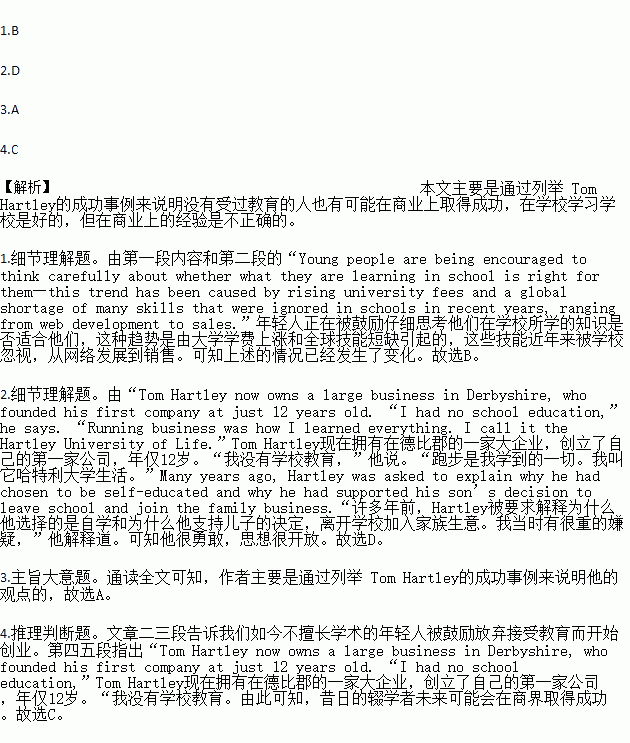题目内容
A decade ago, secondary and higher education was  listed above all else. Apprenticeships(学徒工作) were considered as a choice for dropouts(辍学者) rather than a brave career choice. Some young men and women didn’t fit into the school system, but preferred to find new starts, so they were allowed to leave school to focus their attention on making a living in the business world.
listed above all else. Apprenticeships(学徒工作) were considered as a choice for dropouts(辍学者) rather than a brave career choice. Some young men and women didn’t fit into the school system, but preferred to find new starts, so they were allowed to leave school to focus their attention on making a living in the business world.
Now there’re no birds of this year in last year’s nests. Young people are being encouraged to think carefully about whether what they are learning in school is right for them—this trend has been caused by rising university fees and a global shortage of many skills that were ignored in schools in recent years, ranging from web development to sales.
Young people are required to stay in education or training until they are 18, but now learning takes place in different forms. The Government also has its own way to help interested youths find an apprenticeship that suits their skills and ambitions.
Tom Hartley now owns a large business in Derbyshire, who founded his first company at just 12 years old. “I had no school education,” he says. “Running business was how I learned everything. I call it the Hartley University of Life.
His business, 43 years on, turns over £ 200 million, and sells cars to customers all over the world. Many years ago, Hartley was asked to explain why he had chosen to be self-educated and why he had supported his son’s decision to leave school and join the family business.
“I got heavy suspect at the time,” he explains. “you can’t teach gut feelings(直觉) on a blackboard. School is fine if you want to be a doctor or fly a rocket to the moon, but it is not true about experience in business.”
1.What does the underlined sentence in Paragraph 2 mean?
A. Education is no more important nowadays.
B. The situation above has changed.
C. Things change for the worse for dropouts.
D. University fees are becoming higher and higher.
2.What does the author say about Tom Hartley?
A. He attaches more value to experience than t o education.
o education.
B. He was supported in founding his first company.
C. He is well-educated and far-sighted.
D. He is brave and open-minded.
3.How does the author prove his view?
A. By giving an example. B. By making a comparison.
C. By analyzing causes. D. By listing figures.
4.Which statement may the author agree with?
A. Education is the only way to success.
B. Education systems vary from country to country.
C. School dropouts could be future business stars.
D. School dropouts were common among youngsters.
 世纪百通期末金卷系列答案
世纪百通期末金卷系列答案| A. | comprehensive | B. | complicated | C. | Conscious | D. | crucial |

